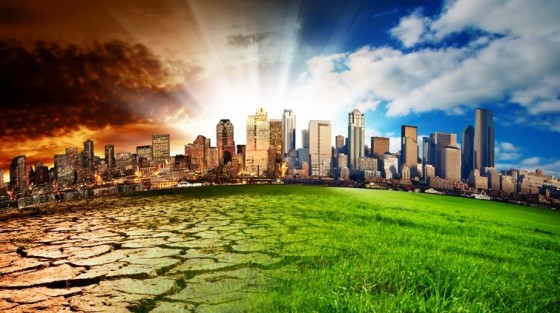Essential elements of a workable global climate agreement

LONDON, Apr. 21, 2015 — Bold action by decision-makers is required now to pave the way for a successful international agreement to reduce the risk of dangerous climate change, say leading scientists at the launch of the Earth League’s ‘Earth Statement’ today.
Written by 17 world-leading scientists, the Earth Statement clarifies, in eight essential elements, what the international climate agreement in Paris in December should achieve in order to provide the world with a good chance of avoiding dangerous climate change.
The first essential element is a commitment to limit global warming to below 2° Celsius, requiring a transition to a zero-carbon society by mid-century.
“The window of opportunity is closing fast. We are on a trajectory that will leave our world irrevocably changed, far exceeding the 2° Celsius mark,” said Johan Rockström, Chair of the Earth League and Executive Director of the Stockholm Resilience Centre.
“This gamble risks disaster for humanity with unmanageable sea-level rise, heat waves, droughts and floods. We would never consider this level of risk in any other walk of life, yet we seem prepared to take this risk with our planet. Conversely, the scientific evidence shows that we can create a positive future but only with bold action now.”
“The science, the economics and the moral imperative to protect our planet all demand this action. We are calling on policy-makers to show real leadership and commit the planet to a sustainable future,” continued Rockström.
The Earth Statement, released to coincide with Earth Day, warns of the risk of crossing tipping points – thresholds in the Earth system that are difficult to reverse once crossed. It highlights recent research suggesting dramatic ice melt in parts of Antarctica may be irreversible, which provides evidence that societies need to take a precautionary approach to significantly altering the global climate.
“COP21 is the moment of truth: the last chance to stay within the 2° Celsius upper limit,” said Professor Jeffrey Sachs, Director of the Earth Institute at Columbia University and an author of the Earth Statement. “The key to success is deep decarburization by mid-century.
“Our studies show that this can be accomplished, at modest cost, and with a significant improvement in the quality of life. Success will require a shared global vision, strong national commitments, and global cooperation on technology pathways.”
The eight essential elements of climate action are:
- Governments must put into practice their commitment to limit global warming to below 2° Celsius in order to limit unprecedented climate impact risks.
- The agreement must be based on the remaining global carbon budget – the limit of what we can still emit in the future – which must be well below 1000 GtCO2, to have a reasonable chance to hold the 2° Celsius line.
- In the agreement, countries must commit to deep decarbonization, starting immediately and leading to a zero-carbon society by 2050 or shortly thereafter. This will require a fundamental transformation of the economy.
- Equity is critical. Every country must formulate an emissions pathway consistent with deep decarburization. For the sake of fairness, rich countries and progressive industries can and should take the lead and decarbonize well before mid-century.
- Targeted research, development, demonstration and diffusion (RDD&D) of low-carbon energy systems and sustainable land use are prerequisites to unleash a wave of climate innovation.
- The agreement should provide the starting point for a global strategy to reduce vulnerability, build resilience and deal with loss and damage of communities from climate impacts, including collective action and scaled-up support.
- Countries must agree to safeguard carbon sinks and vital ecosystems, such as forests, which is as important for climate protection as the reduction of emissions.
- Governments must urgently realize new scales and sources of climate finance for developing countries to enable our rapid transition to zero-carbon, climate-resilient societies.
To view the full Earth Statement please visit: earthstatement.org



